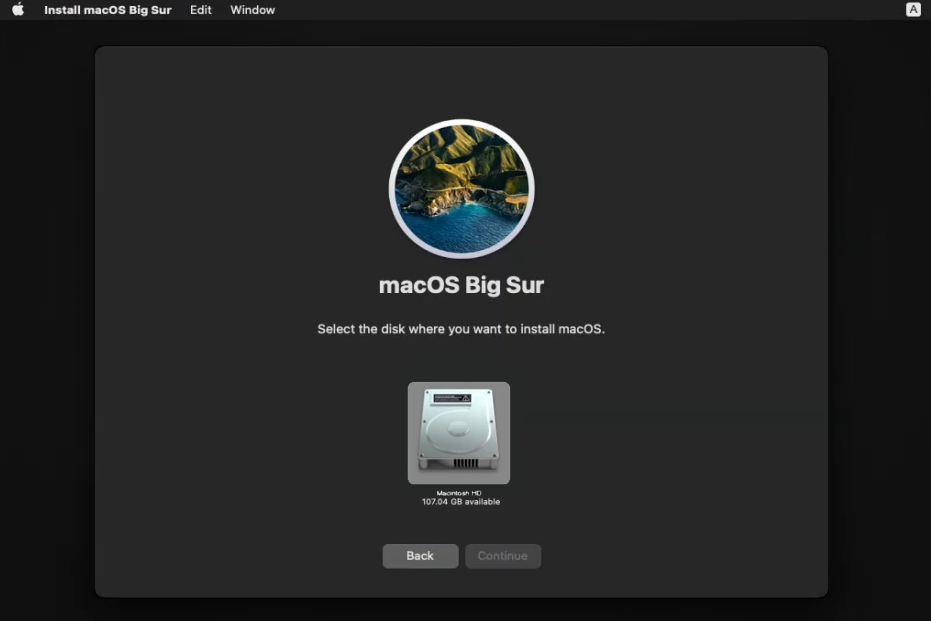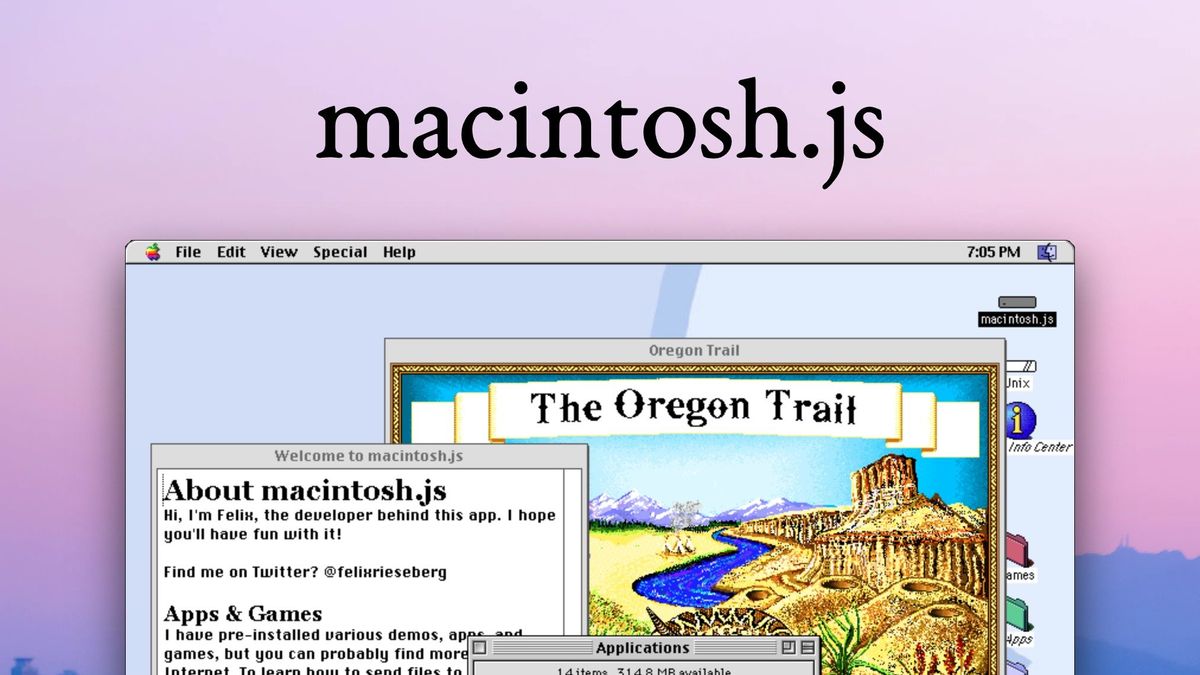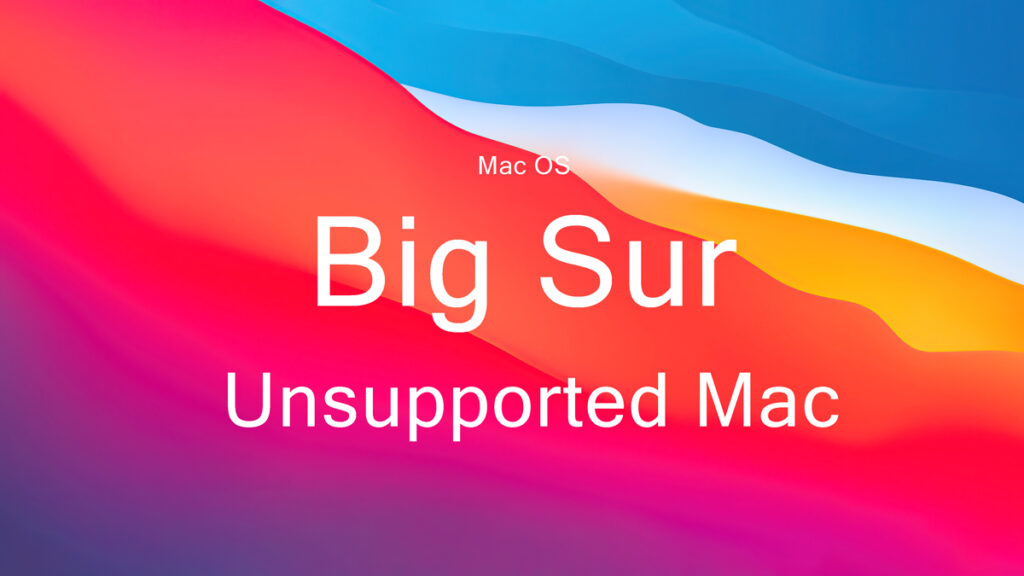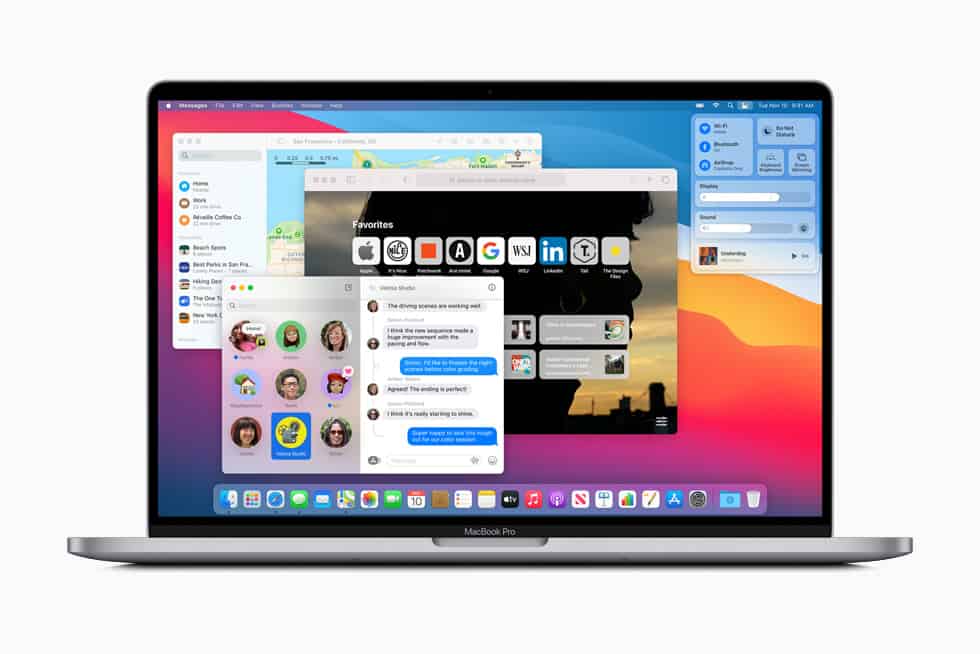macOS 11 Big Sur is an advanced Macintosh operating system that you can install on your Mac. It has got tons of new features to enhance the user experience, like making safari browser 50% faster, new features of messages, Air Pods improvements, new-design sidebar in mail and photos, widgets in the notification bar, and many more.
Apple announced this new software on 22 June at WWDC. And this time, Apple did a big challenge and released the macOS 11 Big Sur along with iOS 14, iPadOS 14, tvOS 14, and watchOS 7. Meanwhile, Apple highlighted all the new features, changes, and improvements to the current software. You can download this new operating system from various sources now. Unfortunately, some Macs can't receive macOS 11 Big Sur update and they can't install the new operating system. In this article, we will discuss how to install macOS 11 Big Sur on an Unsupported Mac with easy steps.
Part 1: Official List of Big Sur Supported Mac Models
- Big sur is very slow. How to speed up macos big sur. Big sur on unsupported mac. Installing big sur on an unsupported mac can’t be done the regular way through system preferences software update.however, if the machine’s not too old, there’s still a way to install big sur on an unsupported mac using a specially developed patcher tool.
- Aug 25, 2021 The macOS 11, which goes by the name Big Sur, comes with a newer user interface and menu bars, redesigning icons and other features. It is better than macOS 10.15, Catalina, due to its powerful improvement and new features. However, Apple dropped various Mac versions, making installation of macOS 11 on unsupported Macs almost impossible.
macOS 11 Big Sur Developer Beta is available to download. But you have to check your Mac compatibility first. If you have the below-listed Macs then you don't have to install macOS 11 Big Sur as these models will receive an update for macOS Big Sur automatically.
- MacBook 2015 and later
- MacBook Air and Pro Late 2013 and later
- Mac mini 2014 and later
- iMac 2014 and later
- iMac Pro 2017 and later (all models)
- Mac Pro 2013 and later
Dec 02, 2020 Normally, you can obtain a copy of macOS Big Sur via System updates under System Preferences or can simply use App Store. But as you're using an unsupported Mac, you won't be able to get new updates as you're using unsupported Mac and Apple will block updates for new OS. MacOS big sur on unsupported hardware. Upgrading from Mojave to Big Sur on Z370 AORUS ultra gaming wifi. OpenCore 0.7.2 doesn't detect drives in boot loader, Catalina installer does. Stuck at 'Bug: launchctl.c:2325' while trying to install 10.6.7 on my Intel Pentium M740 laptop using Chameleon bootloader (Enchon). Running Big Sur on another macOS on an unsupported Mac may also be considered against Apple's terms and conditions. For information about Apple's terms and conditions read: Should you agree to.
Part 2: Unsupported Mac Models of Big Sur (Not Eligible for Direct Upgrade)
On the other hand, if you have the below-listed Mac computers then you can install macOS Big Sur on those models as they are unsupported officially. You have to do some hacks to let Big Sur running on unsupported Macs.
- MacBook Air 2012
- MacBook Pro 2012 and Early 2013 MacBook Pro
- 2012 Mac Mini
- 2012 and 2013 iMac
Part 3: How to Install macOS Big Sur on an Unsupported Mac
Before the installation, make sure that you take a backup of your Mac on an external hard disk as you will lose all your data when you install the new operating system. There are several backup software like Time Machine, iCloud, Dropbox, and many more. Once you have taken a backup follow the instructions below to install macOS Big Sur on your unsupported Mac.
Step 1: First you need to download two files from the links below to complete the macOS 11 Big Sur installation on your unsupported Mac.
- macOS Big Sur PKG installer: https://developer.apple.com/macos/
- macOS Big Sur PKG install hack: https://forums.macrumors.com/simple-installer-hack-zip.926156/
Step 2: After you have downloaded these two files, unzip the hack and copy the hax.dylib file and then paste it to home folder.
Step 3: Click on Install Assistant.pkg to install required contents to your Mac. Make sure that you have enough space on your hard disk as the file will take 20.1 MB size on your computer.
Step 4: Now go ahead and tap on the Install button to install the software on the disk 'Macintosh SSD'. Once you click the 'Install' button then it will ask you to enter your password. Next, click the 'Install Software' button.
Step 5: Next, you have to boot your computer into Recovery mode. You can do that by pressing Command + R immediately on startup until Recovery option appears. In case if you have no recovery partition, you can press down Command + Option +R to get into Internet Recovery. After that, go to Utilities -> Terminal and type 'csrutil disable', followed by pressing the Enter button on your keyboard.
Step 6: Type the following two commands in the terminal. Once you apply the first command, type your login password, and then input the second command.
sudo defaults write /Library/Preferences/com.apple.security.libraryvalidation.plist DisableLibraryValidation -bool true
launchctl setenv DYLD_INSERT_LIBRARIES $PWD/Hax.dylib
Step 7: Next, run the macOS 11 Big Sur installer app that you installed from InstallAssistant.pkg a while ago. Now click on the 'Continue' button and follow the instructions to complete the installation process.
Step 8: The installation will take about 30 minutes approximately. Once the installation is successful you will see the macOS 11 Big Sur wallpaper on your Mac screen. That's it, you have installed macOS Big Sur on your unsupported Mac successfully.
Follow the above-mentioned method to install macOS 11 Big Sur on unsupported Mac devices. The method is quite easy; you just have to focus on the command line and other installation procedures.
Part 4: Alternative Method to Install Big Sur on an Unsupported Mac
The above tutorial is for users who still have access to their device. However, if your Mac is unable to boot into Desktop or you are using a Hackintosh, then you should follow the alternative method instead. In this part, we will show you how to create a macOS Big Sugr bootable USB on a Windows PC and install macOS Big Sur on unsupported Mac by using that bootable media.
Step 1: Make a full backup of important files on your Mac.
Step 2: Download a copy of UUByte DMG Editor and follow the instructions to install it on your Windows PC.
Step 3: Insert a USB flash drive into PC and open UUByte DMG Editor. Now, click the Burn tab to get into the new window.
Step 4: You will see three options on Burn windows. Please import macOS Big Sur DMG file into the program and choose the USB drive name. You can also set a new name for that USB drive. And this is optional.
Step 5: Once the setting process is completed, just click 'Burn' button located at the bottom to start burning dmg file to USB on your PC. You should wait about 10 minutes for this task.
Step 6: Plug Big Sur bootable USB on your Mac and press Power + Option combine keys to open Startup Manager. At this stage, you are able to select a booting device. Click on the USB drive and start Big Sur installation process.

This part is mainly for Windows users who want to install Big Sur on an unsupported Mac. The most important step is to create a bootable USB drive.
Troubleshooting:
If your system is showing any error message while installing the macOS Big Sur you can try these methods to fix it.
- Restart your Computer and continue with the installation.
- Make sure that your Mac’s date and time is correct.
- Check your Hard Drive to see that you have enough free space to carry out the installation.
- Make sure that the version of macOS Big Sur is up to date including the macOs installer
- Run first aid on your startup disk before installing macOS Big Sur to check any system files are damaged or not.
Summary
You can see that it is not hard to install macOS Big Sur on an Supported Mac. Make sure that you key in the right command lines which are mentioned above, as typing a wrong command can harm your system. Enjoy the great features that come with the macOS Big Sur on your unsupported device!
author :gc(at)sysin.org, Home page :www.sysin.org
Please visit the original link :https://sysin.org/article/install-macos-11-on-unsupported-mac/, Check out the latest version of . Reprint please keep the original link .
Friendship tips : Please back up the data before installing the system !
The author tests one Mac mini 2012 later, No longer Big Sur Official support list , Use the following method , Already working perfectly Big Sur.
1. macOS Big Sur Official release
macOS Big Sur
A new look ,
Whatever you want to do .
macOS Big Sur Take the combination of powerful strength and beautiful appearance to a new height . A brand new design with elaborate design , So that you can fully feel Mac The charm of ;Safari Browser ushers in a major update , When you have a good look ; Map app And information app Full of new features , You can explore ; More transparent privacy rights , Protection is also more thoughtful .
macOS Big Sur 11.0 release date: 2020.11.11
2. Official list of support
MacBook 2015 and later Learn more
MacBook Air 2013 and later Learn more
MacBook Pro Late 2013 and later Learn more
Mac mini 2014 and later Learn more
iMac 2014 and later Learn more
iMac Pro 2017 and later (all models)
Mac Pro 2013 and later Learn more

3. Unsupported models and problems
according to macrumors Summary of , Unsupported Mac It can be divided into several situations :
Official support macOS Catalina But not by macOS Big Sur Supported by Mac Model :
-- these Mac Can operate normally Big Sur, however Wi-Fi Not working properly .( This type of machine is the easiest to run perfectly with patches Big Sur, Now it's just Wi-Fi The problem of .)
You can follow the steps below , This paper focuses on this type of aircraft .
- 2012 and Early 2013 MacBook Pro
- MacBookPro9,x
- MacBookPro10,x
- 2012 MacBook Air
- MacBookAir5,x
- 2012 and 2013 iMac
- iMac13,x
- iMac14,x
- 2012 Mac mini
- Macmini6,x
- 2010-2012 Mac Pro*
- MacPro4,1
- MacPro5,1
*Not officially supported in macOS Catalina, but are fully capable of running both Catalina and Big Sur with a Metal-compatible GPU and upgraded Wifi/BT card.
Mac Can be patched and run normally macOS Catalina, And it could be patched to run macOS Big Sur:
-- these Mac Now you can start Big Sur, But there's no Wifi Or graphics acceleration support .
This type of machine requires additional steps to solve the installation problem .
- Early-2008 or newer Mac Pro, iMac, or MacBook Pro:
- MacPro3,1*
- MacPro4,1*
- MacPro5,1*
- iMac8,1
- iMac9,1
- iMac10,x
- iMac11,x (systems with AMD Radeon HD 5xxx and 6xxx series GPUs were almost unusable when running Catalina and will be under Big Sur as well.)
- iMac12,x (systems with AMD Radeon HD 5xxx and 6xxx series GPUs were almost unusable when running Catalina and will be under Big Sur as well.)
- MacBookPro4,1
- MacBookPro5,x
- MacBookPro6,x
- MacBookPro7,x
- MacBookPro8,x
- Late-2008 or newer MacBook Air or Aluminum Unibody MacBook:
- MacBookAir2,1
- MacBookAir3,x
- MacBookAir4,x
- MacBook5,1
- Early-2009 or newer Mac Mini or white MacBook:
- Macmini3,1
- Macmini4,1
- Macmini5,x (systems with AMD Radeon HD 6xxx series GPUs were almost unusable when running Catalina and will be under Big Sur as well.)
- MacBook5,2
- MacBook6,1
- MacBook7,1
- Early-2008 or newer Xserve:
- Xserve2,1*
- Xserve3,1*
*Not officially supported in macOS Catalina, but are fully capable of running both Catalina and Big Sur with a Metal-compatible GPU and upgraded Wifi/BT card.
Totally unsupported Mac:
This type of machine does not need to be installed Big Sur.
- 2006-2007 Mac Pros, iMacs, MacBook Pros, and Mac Minis:
- MacPro1,1
- MacPro2,1
- iMac4,1
- iMac5,x
- iMac6,1
- iMac7,1
- MacBookPro1,1
- MacBookPro2,1
- MacBookPro3,1
- Macmini1,1
- Macmini2,1
- — The 2007 iMac 7,1 is compatible with Catalina and potentially Big Sur if the CPU is upgraded to a Penryn-based Core 2 Duo, such as a T9300.
- 2006-2008 MacBooks:
- MacBook1,1
- MacBook2,1
- MacBook3,1
- MacBook4,1 (as with Mojave and Catalina, we'll be on our own here, but Big Sur will be running on this machine!)
- 2008 MacBook Air (MacBookAir 1,1)
- All PowerPC-based Macs
- All 68k-based Macs
4. download macOS Big Sur
Mac App Store
open App Store Search directly macOS Download it .
After downloading , You can see Install macOS Big Sur Located in the application (Application) Under the table of contents .
Baidu SkyDrive DMG Mirror image
Please visit :https://sysin.org/article/macOS-Big-Sur/
After downloading , Double-click to open dmg file , take Install macOS Big Sur Drag and drop to the application (Application) Next .
5. Patch tool download
(1) Hax.dylib: link 1
(2) big-sur-micropatcher
6. Installation mode : New installation or upgrade installation under the current system

(0) Prerequisite
Make sure Mac The system currently running is macOS Catalina.
(1) Boot to recovery mode (recovery mode)
When starting or restarting , Hold down Command + R Don't play it until the splash screen (Apple logo) appear .
without recovery Partition , Need to press Command + Option + R, Will start Internet Recovery.
(2) Ban sip (System Integrity Protection)
Utilities ( Utilities ) -> Terminal( terminal ) Enter the command csrutil disable press return .
(3) Ban compatibility check
Continue to execute commands in the terminal :
(4) restart , Normal start macOS Catalina
(5) Ban libraries validation
Open the terminal and execute the command :
(6) Insert library
Will download Hax.dylib Files in home Under the table of contents , namely /Users/< Your username >/ Under the table of contents , Execute commands at the terminal :
(7) Start installation macOS Big Sur

New installation
Before you start installing , We turn on “ Disk tools ” Create a new one APFS Dossier , Then double-click in the application Install macOS Big Sur Start installation , Target disk select the newly created volume , After installation , Will automatically start to the new system .
After installation, you can delete the original system APFS Dossier , Keep only Big Sur System .
upgrade installation
Double click... In the application Install macOS Big Sur Start normal installation . The target partition of the installation selects the partition where the current system is located , That is to automatically upgrade and install .
By default , Factory settings have only one partition , be known as :Macintosh HD
(8) Solve the problem of network card driver
On some models , The wireless network card is working properly (Late 2013 iMac, Or your 2012/2013 The model uses 802.11ac The network card has been replaced 802.11n network card ).
If the wireless card doesn't work , It needs to be handled as follows :
You need to use the following 7 The method of article , Create and launch U disc . Restart the system , Hold down Option Key until the boot partition selection screen appears , Boot to 'Install macOS Big Sur', After starting , choice “Utilities ( Utilities ) -> Terminal( terminal )”, Execute the following command ( All three formats can support , Choose any one ,“Macintosh HD” Is your default system installation partition name , Replace... According to the actual name ):
And then restart to macOS Big Sur, here Wi-Fi It's normal .
7. Installation mode : New installation with mobile media
Tips :U Disk can also be replaced by a mobile hard disk , especially SSD mobile hard disk drive , Faster .
7.1、 Create boot media
(1) Create a start U disc
Prepare one 16G Or above U disc , open “ Utilities > Disk tools ”, choice U disc , Click on “ erase ”, The format is as follows :
- Mac OS X Expand ( Journal style );
- GUID Partition map ;
- Partition name :MyVolume( The default is Untitled, You can customize , Note the following terminal command MyVolume Also change it to the same name you defined )
Open the terminal , Execute the following command :
Be careful : After creation , The partition name will be automatically changed to :/Volumes/Install macOS Big Sur
Macos Big Sur On Unsupported
(2) Create a boot partition ( Warning : Test only , It is not recommended to use )
Warning : If you use the following 7.3 and 7.4 Step operation , Will modify the system automatically created EFI The contents of the volume .
Mac Os Big Sur Release Date
If you use Bootcamp Installed Windows 10 Dual system , And use ” Start partition “ Instead of U Disk start , There is only one 'EFI Boot' Icon , however Windows Of 'EFI Boot' Icon disappear , Will not be able to start to Windows.
In addition, after the system is installed , 'EFI Boot' Unable to delete .
open “ Disk tools ”, Click on ” Partition “ Button , Create an approximately 16G Of “macOS Expand ( Journal style )” Partition ( Not APFS volume ), Name it Install, Execute the command to write :
Be careful : After creation , The partition name will be automatically changed to :/Volumes/Install macOS Big Sur
7.2、 take big-sur-micropatcher Unzip and put it in home Under the table of contents , namely /Users/< Your username >/ Under the table of contents
7.3、 function micropatcher.sh
Mac Os Big Sur Download
Open the terminal and execute the command :
7.4、 function install-setvars.sh
Big Sur On Unsupported Imac
Continue to execute at the terminal :

7.5、 Automatic patch execution
Restart the system , Hold down Option Key until the boot partition selection screen appears , Two additional icons will appear 'Install macOS Big Sur' and 'EFI Boot', choice 'EFI Boot', From now on 'EFI Boot' Partition start , Waiting for a few seconds will automatically shut down ( It may shut down in an instant ), The process will do the following :disabling SIP, disabling authenticated root, and enabling TRIM on non-Apple SSDs.
Tips : If you're not sure which one to choose 'EFI Boot' Icon , For example, it has been installed Windows Dual systems may have extra 'EFI Boot' Icon , Can be U Pull out the disk and plug it in again , Watch the icon change to determine . In fact, the icon of mobile media is different .
7.6、 Start installation macOS Big Sur
Reboot , Hold down Option Key until the boot partition selection screen appears , choice Install macOS Big Sur, After starting , choice “ Disk tools ”, Erase the system partition ( The default name is “Macintosh HD”, Format selection APFS), Start installation .
7.7、 Solve the problem of network card driver
On some models , The wireless network card is working properly (Late 2013 iMac, Or your 2012/2013 The model uses 802.11ac The network card has been replaced 802.11n network card ).
If the wireless card doesn't work , Again using U Disk boot to 'Install macOS Big Sur' Partition , After starting , choice “Utilities ( Utilities ) -> Terminal( terminal )”, Execute the following command ( All three formats can support , Choose any one ,“Macintosh HD” Is the default name , Modify according to the actual name ):
7.8、 restart
here Wi-Fi The repair was successful ,macOS Big Sur It's fully operational .
8. About reporting errors :BIErrorDomain Error 2
This error is usually due to insufficient disk space on the destination , Usually 35GB The space left and right . If Install app Not placed in “ Applications ” Under the table of contents , The same error message will appear .
9. Additional steps
about 2012、2013 Model year , Official support macOS Catalina But not by macOS Big Sur Supported by Mac Model ,Mac It's working perfectly , But some old models , It takes some extra steps , See the following instructions :